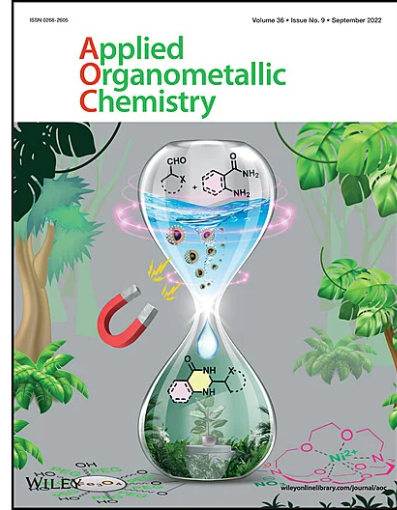Organosilane Functionalized Graphene Oxide Nanocomposite as Fluorescent Chemosensor for the Detection of Tyrosine in Aqueous Medium
Abstract
In the present article, a selective and efficient sensor based on organosilane functionalized graphene oxide nanocomposites has been synthesized for the fluorometric detection of tyrosine (Tyr). The 1,2,3-triazole functionalized organosilane has been synthesized by a condensation reaction between 4-(methylthio) aniline and alkylated benzaldehyde followed by azide-alkyne cycloaddition reaction using Cu (I) catalyst. The synthesized organosilane has been fabricated on graphene oxide nanoparticles and the obtained graphene-functionalized organosilane (GO-Silane) was characterized by FTIR and XRD. The morphology of the nanocomposite film was analyzed using scanning electron microscopy. The photophysical properties of GO-Silane were studied which established its selective sensor for tyrosine with the limit of detection values of 1.04 × 10−8 M with a response time of 8 s. The strong coordinated interactions of GO-Silane for the Tyr have been confirmed from FTIR spectra of the GO-Silane-Tyr complex. The competitive amino acid interference assay successfully demonstrated the selectivity of the nanocomposite sensor.


 求助内容:
求助内容: 应助结果提醒方式:
应助结果提醒方式:


